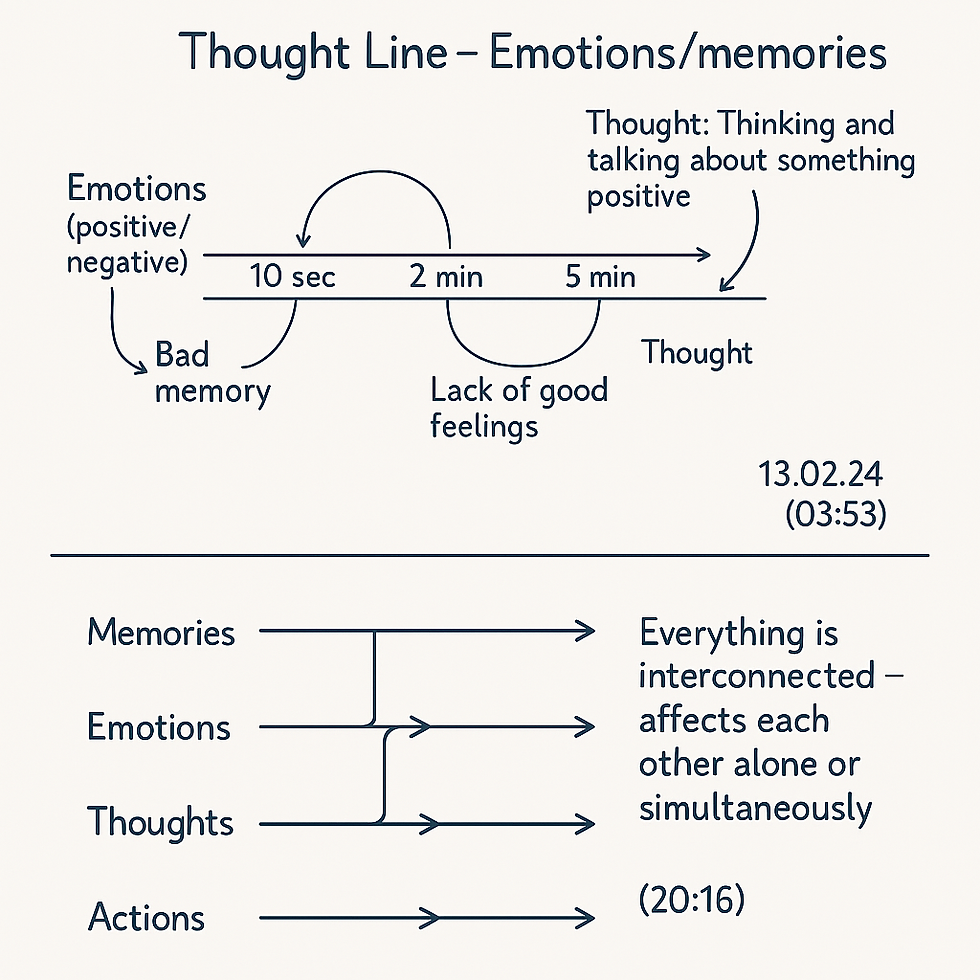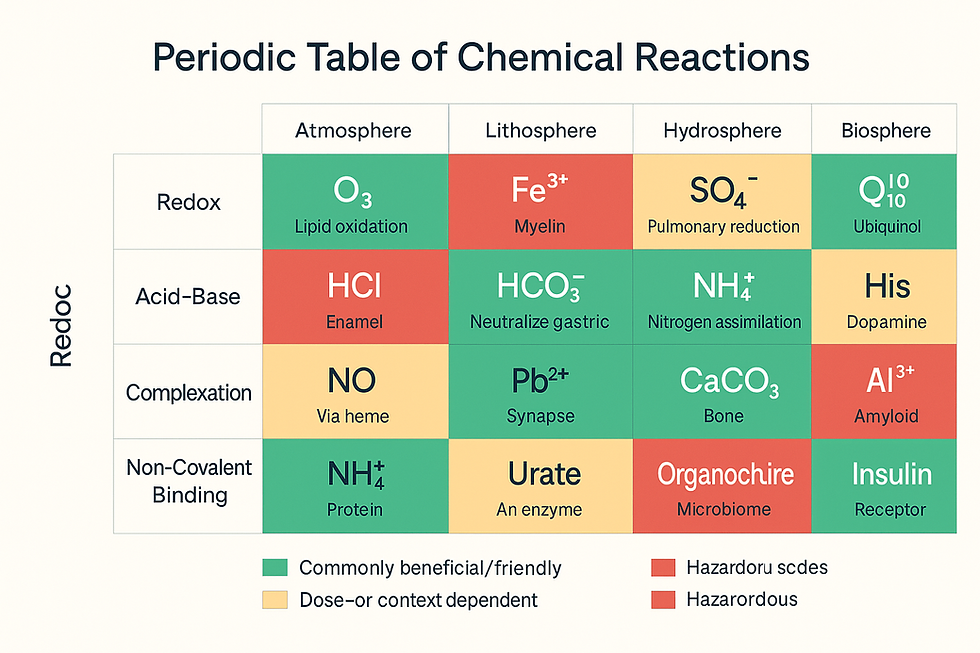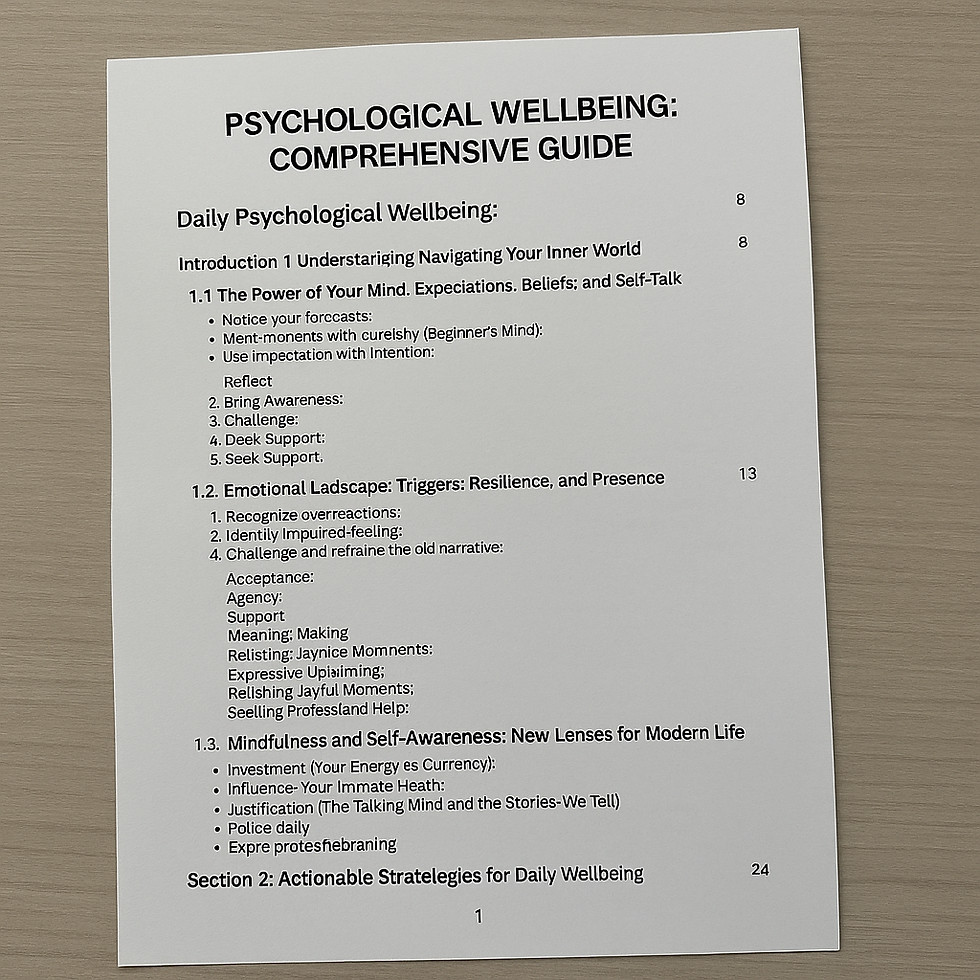The Closest Interest of the Mind: A Journey Through the Thought Line
- David B. N. J. & "A.I."
- Mar 26
- 3 min read
Updated: Jun 7

Download the paper here in pdf:
Listen about this topic in a podcast here:
At the core of human consciousness lies an invisible thread—a thought line—pulling experiences forward through time. Along this fragile thread, our emotions, memories, and thoughts form a continuous narrative, dynamically affecting how we act, react, and reflect. Like electrical currents sparking across a neural network, moments of memory surge into awareness, pulled not by logic or chronology, but by what can best be described as the closest interest of the mind.
This closest interest refers to the nearest thought or memory within reach, brought forward by the current mindset in operation. It’s not random—it is contextual, often emotional, and always present-oriented. At any given moment, the mind scans its own archive, and what appears isn’t necessarily what’s most important, but what is most accessible, most emotionally charged, or most related to the current state of mind.
The Thought Line: A Timeline of Emotional Influence
Imagine a horizontal line stretching across time. Each point on that line represents a moment of awareness—tinged by emotion, influenced by memory, and propelled by thought. On this line, we might encounter a bad memory, triggered by a word or a smell. Within seconds, the emotional weight of that memory (fear, anger, sorrow) resurfaces. The timeline accelerates. Ten seconds of anxiety. Two minutes of inner unrest. A minute of scattered reasoning. Five minutes of mental rumination.
These aren’t just minutes passing. They are neural echoes—moments where thoughts latch onto nearby emotions and pull them into the spotlight. When negative thoughts are allowed to spiral without intervention, they become loops—small emotional whirlpools that trap awareness.
And yet, here’s where the mind's closest interest re-enters the picture.
Even within negativity, the mind remains active, scanning for relevance. It will naturally try to retrieve a complementary or contrastive memory—something nearby, contextually or emotionally. A comforting moment. A parallel situation. A resolution from the past. The mind is not just a prisoner of bad memories; it’s a navigator constantly searching for something relevant to the now. What it brings up next depends on what lies closest.
Cognitive Gravity: What Pulls a Thought into View?
Why does one memory surface instead of another?
Because the mind is not a filing cabinet. It’s a web of relevance, and emotional charge gives that web its gravitational force. Thoughts with stronger emotional resonance (positive or negative) lie closer to the surface. They are within the cognitive reach of the present moment.
This is why people can shift from a single painful thought to a spiral of related ones. Each thought activates others in its emotional cluster. But—importantly—the same system allows for recovery. A single positive memory, placed intentionally or discovered spontaneously, can redirect the entire flow.
Thus, managing the closest interest of the mind becomes a form of mental navigation. When we become aware of which memories and thoughts lie closest, we can influence the trajectory. We can choose to engage with thoughts that uplift, reframe, or neutralize negative spirals.
Interconnected Layers: Memory, Emotion, Thought, Action
The underlying architecture is layered. Memories influence emotions, emotions generate thoughts, thoughts shape actions. And yet, these aren't linear—they’re deeply intertwined. A memory might bypass emotion and generate immediate action. A thought might reframe a memory. An action might change how we feel, retroactively adjusting the memory it was based on.
All layers are mutually reinforcing or mutually disrupting. Like a symphony, they must be tuned. Disruption in one area—such as unresolved emotion—can echo into faulty thinking. Harmony in one area—like mindful reflection—can ripple into emotional regulation and wise action.
Mindful Engineering of the Thought Line
If one accepts that thoughts emerge from what’s closest, and that closeness is influenced by emotional state, then it becomes clear: we can engineer what’s closest.
By practicing intentional thought (e.g. journaling, positive focus, mental rehearsal), we can store certain thoughts closer to the surface. We can create emotional nearness to hope, resilience, and solution-based thinking. Over time, the mind learns which thoughts to reach for first.
This is not mental manipulation—it’s mental design.
Conclusion: The Architecture of Attention
The closest interest of the mind is more than a philosophical idea. It is a real mechanism—cognitive, emotional, and deeply personal. In any moment, what emerges in thought is what lies nearest in memory and emotion. This is the invisible architecture of attention, and understanding it offers a path not only to greater self-awareness but also to personal freedom.
By drawing the thought line, observing the loops, and learning what our mind reaches for first, we gain power. Power to reflect. Power to redirect. Power to think—not what the past commands—but what the present needs.





Comments